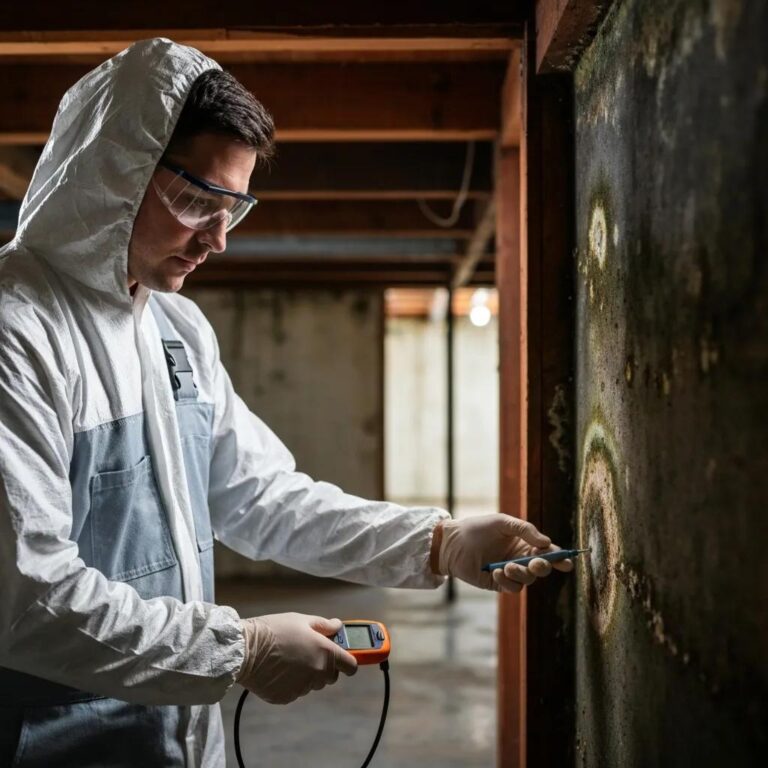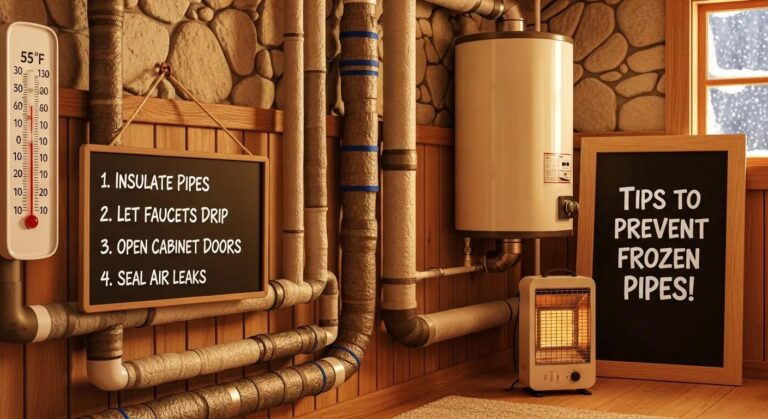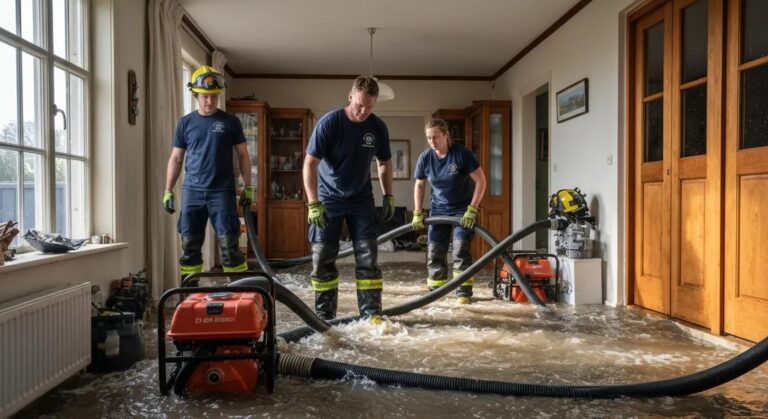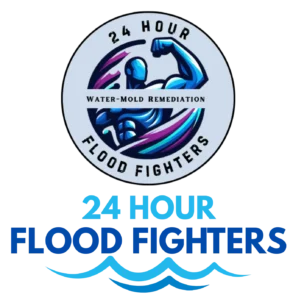How to Know If a Water Leak Is Causing Mold: Signs, Detection, and Prevention
Do you know if a water leak is causing mold? A hidden water leak can spur mold growth within 24–48 hours, compromising indoor air quality and structural integrity. Recognizing early warning signs, uncovering concealed colonies, and acting swiftly can prevent costly damage and health hazards. This guide reveals:
- Common surface signs of mold from leaks
- Techniques for detecting hidden fungal growth
- Identification of mold species after water intrusion
- Health risks linked to mold exposure
- Immediate steps to stop mold development
- When to enlist professional inspection and remediation
- Long-term strategies for a mold-free home
By using these helpful tips, you will feel more confident in finding, fixing, and stopping mold from water leaks.
What Are the Common Signs of Mold Caused by Water Leaks?
Common signs of mold from water leaks include visible discoloration, such as musty odors, and warped or damp surfaces that signal fungal colonization on building materials. Consequently, early recognition of these indicators prevents structural deterioration and reduces allergy or respiratory issues later on.
What Visual Indicators Reveal Mold from Water Damage?
Visual clues such as stains, fuzzy growth, and peeling paint define mold presence because moisture accumulation enables fungal spores to colonize porous materials. Consequently, these indicators are essential for identifying mold infestations.
- Discoloration appears as black, green, white, orange, or pink patches on walls and ceilings.
- Textural changes include fuzzy or slimy spots forming on drywall or wood.
- Peeling paint and bubbling wallpaper occur when mold degrades adhesives and layers.
These visual signs make it clear that moisture intrusion has allowed mold to flourish, prompting a closer olfactory inspection for airborne spores.
How Can You Detect Mold by Smell After a Water Leak?
A persistent musty, earthy, or foul odor indicates microbial volatile organic compounds (mVOCs) released by mold when water saturates building materials.
- Smell mustiness near baseboards and behind furniture where spores accumulate.
- Earthy odors often intensify around damp carpets or under sinks.
- Foul, sour scents may arise from hidden mold feeding on cellulose.
Olfactory detection often precedes visible growth and should lead you to inspect adjacent surfaces for discoloration or moisture.
What Physical Changes in Your Home Suggest Mold Growth?
Damp walls, sagging ceilings, and condensation reflect moisture accumulation that fosters mold proliferation by weakening building materials.
- Walls feel soft or spongy when mold breaks down drywall fibers.
- Ceilings may sag or bulge under saturated plaster and mold infiltration.
- Condensation on windows and metal pipes signals high indoor humidity and hidden mold risk.
Physical deformation of surfaces underscores the need for moisture measurement tools to uncover concealed mold behind structure.
How Can You Detect Hidden Mold Caused by Water Leaks?

Detecting hidden mold after a water leak involves inspecting concealed cavities, measuring moisture levels, and sampling air for fungal spores to uncover invasion beyond visible surfaces. Comprehensive detection minimizes overlooked colonies that can expand rapidly.
Where Does Hidden Mold Commonly Grow After Water Damage?
Hidden mold often colonizes areas shielded from casual view where moisture lingers undetected:
- Behind walls and under baseboards where plumbing leaks seep into framing.
- Under flooring and carpets that trap moisture against subflooring.
- Inside HVAC ducts and air handlers where condensation accumulates.
- In basements and crawlspaces with poor ventilation and high humidity.
- Within attics or ceilings after roof leaks drip between joists.
Identifying these hotspots guides targeted inspections with specialized tools.
What DIY Methods Help Find Mold Hidden from View?
For example, a combination of moisture meters, swab tests, and visual inspection tips can reveal concealed mold before it becomes extensive.
- Use a moisture meter to scan walls, floors, and ceilings for elevated moisture readings.
- Collect surface swabs for home test kits that detect mold DNA or spores.
- Shine a flashlight at an acute angle to reveal discoloration in tight corners.
- Drill small inspection holes to visually inspect cavities with a borescope camera.
These DIY methods provide preliminary evidence of hidden mold, though professional confirmation may still be advisable.
When Should You Call a Professional for Mold Inspection?
Professional mold inspection becomes necessary when advanced tools and expertise ensure accurate detection and remediation planning:
Experts employ infrared thermal imaging to spot moisture behind finishes, conduct air sampling to quantify spore levels, and map contamination zones accurately.
Hiring certified specialists, like 24 Hour Flood Fighters, helps prevent missed outbreaks. This ensures safe containment and sets the stage for effective cleanup.
What Types of Mold Commonly Grow from Water Leaks?
Stachybotrys chartarum (black mold), Aspergillus, Cladosporium, Alternaria, and Penicillium frequently colonize damp areas following leaks, each with distinct coloration and health risks that guide remediation priorities.
| Mold Species | Appearance | Common Location | Health Concern |
|---|---|---|---|
| Stachybotrys chartarum | Black, slimy patches | Wet drywall, rotted wood | Mycotoxin exposure, respiratory issues |
| Aspergillus | Yellow-green powdery clusters | Air ducts, insulation | Allergic reactions, asthma triggers |
| Cladosporium | Olive-green to black spots | Carpets, caulking | Skin irritation, bronchial issues |
| Alternaria | Brownish fuzzy edges | Window frames, showers | Sinusitis, hay fever symptoms |
| Penicillium | Blue-green velvety clusters | Wallpaper, cardboard | Asthma exacerbation, allergies |
What Does Black Mold from Water Damage Look Like?

Black mold, or Stachybotrys chartarum, appears as dark greenish-black, slimy patches on cellulose-rich surfaces. Its growth thrives in persistently wet drywall and wood. Identifying black mold early is critical because its mycotoxins pose significant respiratory and neurological hazards in enclosed spaces.
Which Other Mold Species Are Common After Water Intrusion?
Beyond black mold, several species form distinct colonies on moist materials:
- Aspergillus produces powdery yellow-green spores, often in air handling units.
- Cladosporium shows olive-green to black spots on textiles and carpets.
- Alternaria presents brown, fuzzy growth around window seals and grout lines.
- Penicillium forms blue-green velvet-like clusters on cardboard and paper products.
Differentiating these fungi supports targeted antifungal treatments and disposal of contaminated materials.
What Are the Health Risks of Mold Exposure from Water Leaks?
Exposure to mold after a water leak can trigger respiratory problems, allergic reactions, and neurological symptoms, with severity depending on spore concentration and individual sensitivity. Understanding these risks motivates swift mold removal and professional intervention.
Health Risks of Mold Exposure
Exposure to mold can lead to a variety of health issues, including respiratory problems, allergic reactions, and neurological symptoms. The severity of these symptoms often depends on the concentration of mold spores and the individual’s sensitivity to them. Understanding these risks is crucial for prompt mold removal and professional intervention.
This research supports the article’s claims about the health risks associated with mold exposure, emphasizing the importance of addressing mold issues promptly.
What Respiratory Symptoms Are Caused by Mold Exposure?
Inhaling mold spores or mycotoxins often leads to respiratory distress through airway inflammation and allergic airway sensitivity:
- Coughing and wheezing develop as the immune system reacts to spores.
- Asthma attacks intensify in individuals with preexisting conditions.
- Chronic sinus irritation and bronchitis-like symptoms occur with prolonged exposure.
These respiratory issues underscore the urgency of mold abatement in leak-affected areas.
What Allergic Reactions and Other Symptoms Indicate Mold Impact?
Mold exposure can spark a range of allergic and systemic reactions due to immune overreaction:
- Sneezing, runny nose, and nasal congestion reflect typical allergic rhinitis.
- Skin irritation, rashes, and hives arise from direct contact with mold fragments.
- Headaches and fatigue may indicate neuroinflammatory responses to mycotoxins.
Monitoring these symptoms helps assess the extent of mold impact and plan medical or remediation steps.
Who Is Most Vulnerable to Mold-Related Health Issues?
Certain populations face elevated risks when mold spreads after a leak:
- Children with developing respiratory systems can suffer chronic asthma and allergy development.
- Older individuals may experience exacerbated breathing difficulties and weakened immunity.
- Immunocompromised people, including those undergoing chemotherapy or organ transplants, face severe infections and systemic effects.
Protecting at-risk occupants requires prompt leak repair and professional mold remediation.
What Immediate Actions Should You Take After a Water Leak to Prevent Mold?
Stopping the leak promptly, thoroughly drying wet materials, and removing damaged items within 24–48 hours curb mold growth by eliminating moisture and food sources for fungi. Rapid response limits health risks and structural damage.
How Do You Stop the Water Leak to Limit Mold Growth?
Begin by isolating the water source and repairing the breach to halt further moisture intrusion.
- Turn off the main water supply or relevant isolation valve.
- Patch small pipe leaks with waterproof tape or epoxy putty until permanent repairs.
- Engage a licensed plumber for complex or concealed leaks.
Swift leak stoppage removes the catalyst for fungal colonization and paves the way for drying.
What Are the Best Practices for Drying Affected Areas Quickly?
Effective drying uses airflow and dehumidification to reduce substrate moisture below mold-supporting levels:
- Position high-velocity fans to circulate air across wet surfaces.
- Deploy dehumidifiers to maintain relative humidity below 60%.
- Open windows and doors to promote cross-ventilation when outdoor humidity is low.
Rapid moisture removal interrupts mold’s growth cycle and protects structural materials.
When and How Should You Remove Water-Damaged Materials?

Disposing of porous items eliminates mold reservoirs and prevents recolonization:
- Cut out and discard saturated drywall and insulation beyond salvage thresholds.
- Rip out carpets and underlays showing staining or persistent dampness.
- Seal waste in heavy-duty plastic bags before removal to contain spores.
Removing irreversibly damaged materials deprives mold of nutrients and confines cleanup to salvageable areas.
When and How Should You Seek Professional Mold Inspection and Remediation?
What Does a Professional Mold Inspection Involve?
Certified inspectors follow systematic protocols that combine advanced detection methods:
- Infrared thermal cameras detect temperature anomalies behind finishes.
- Hygrometers and moisture sensors map residual dampness in structural cavities.
- Air and surface sampling quantify spore concentrations and species.
Comprehensive assessment yields a detailed report for targeted remediation.
How Is Mold Remediation Performed After Water Damage?

Remediation follows a structured process to contain, remove, and sanitize mold-infested areas:
| Remediation Step | Method | Purpose |
|---|---|---|
| Containment | Physical barriers with negative air pressure | Prevents spore spread to unaffected zones |
| Removal | Safe disposal of contaminated materials | Eliminates existing mold biomass |
| Cleaning | Application of EPA-approved antifungal agents | Destroys residual spores on all exposed surfaces |
| Drying | Industrial dehumidifiers and air movers | Reduces moisture to inhibit future fungal growth |
Mold Remediation Process
Professional mold remediation involves a structured process to contain, remove, and sanitize mold-infested areas. This process includes containment using physical barriers and negative air pressure, safe disposal of contaminated materials, cleaning with EPA-approved antifungal agents, and drying with industrial dehumidifiers and air movers. This ensures thorough eradication of mold and prevents recurrence.
This post gives a clear overview of the steps in professional mold removal. It supports the article’s advice on how to remove mold effectively.
This sequence ensures thorough eradication of mold and stabilizes humidity to prevent recurrence.
What Are the Benefits of Professional Mold Remediation Services?
Engaging specialists delivers superior outcomes through expertise, safety, and long-term protection:
- Ensures complete mold removal and minimized airborne spore spread.
- Reduces liability and health hazards with certified cleanup standards.
- Provides documented clearance testing to confirm mold levels are safe.
Professional remediation not only restores aesthetics but also safeguards air quality and structural integrity.
How Can You Prevent Mold Growth Long-Term After Water Leaks?
Maintaining indoor humidity below 60%, optimizing air circulation, and conducting regular inspections create an environment hostile to mold by controlling moisture and identifying vulnerabilities early. Consistent prevention preserves home health and value.
How Does Humidity Control Help Prevent Mold?
Regulating relative humidity stifles mold’s ability to germinate and propagate:
- Dehumidifiers extract excess moisture from the air in basements and laundry rooms.
- Air conditioning systems stabilize indoor temperatures and humidity year-round.
- Humidity monitors alert you when levels exceed the 30–60% optimal range.
Humidity Control and Mold Prevention
Regulating relative humidity is a key strategy in preventing mold growth. Maintaining indoor humidity levels below 60% can stifle mold’s ability to germinate and propagate. This can be achieved through the use of dehumidifiers, air conditioning systems, and humidity monitors to alert you when levels exceed the optimal range.
This post highlights how important it is to control humidity to stop mold growth. This reinforces the article’s advice for preventing mold in the long run.
What Ventilation Improvements Reduce Mold Risk?
Enhancing airflow along moisture-prone areas discourages stagnant dampness where mold thrives:
- Install exhaust fans in bathrooms and kitchens to expel humid air directly outdoors.
- Use window vents or trickle vents to ensure continuous fresh-air exchange.
- Maintain HVAC ductwork and filters to promote clean, balanced airflow.
Improved ventilation disperses condensation and restricts fungal growth zones.
Why Are Regular Inspections Important for Mold Prevention?
Scheduled checks of plumbing, roofing, and HVAC systems catch leaks and blockages before mold gains a foothold:
- Inspect under sinks and behind appliances for slow drips and dampness.
- Examine roof eaves, flashing, and attic spaces for water intrusion.
- Service HVAC units semi-annually to detect clogged drains or coil condensation.
Proactive maintenance uncovers early leak signals and prevents moisture buildup.
How Can Addressing Condensation Help Avoid Mold?
Eliminating surface condensation removes one of mold’s primary moisture sources:
- Apply insulation to cold water pipes to reduce vapor accumulation.
- Install vapour barriers in crawlspaces to block ground moisture.
- Ensure attic vents offer adequate air intake and exhaust to balance roof deck temperatures.
Managing condensation interrupts mold’s water supply, keeping hidden colonies at bay.
A proactive approach to leak detection, swift remediation, and consistent moisture control ensures your home remains mold-free, structurally sound, and healthy for all occupants. Consider engaging certified mold inspection professionals for comprehensive assessment and long-term protection of indoor air quality.
Conclusion
Addressing water leaks promptly and effectively is crucial to preventing mold growth and safeguarding your home’s integrity. By recognizing the signs of moisture intrusion and implementing proactive measures, you can protect your indoor air quality and health. For comprehensive mold inspection and remediation services, consider reaching out to certified professionals who can ensure a thorough assessment. Take the first step towards a mold-free environment by exploring our expert services today.
Helpful Resources:
The Centers for Disease Control and Prevention (CDC) offers clear information about mold. This includes its health effects, how to prevent it, and ways to clean it up.
U.S. Environmental Protection Agency
(EPA): Offers resources on mold, moisture control, and health effects, along with guidance on mold cleanup and testing.
National Institute of Environmental Health Sciences (NIEHS): Discusses how mold affects human health, common types of mold, and prevention strategies.
Occupational Safety and Health Administration (OSHA): Provides information on mold hazards, control measures, and safety guidelines for workers involved in mold remediation.
Minnesota Department of Health:
Offers guidance on mold removal, protective measures, and steps to prevent mold growth in homes
24 Hour Flood Fighters:
Your go to in Middle Tennessee for all water damage and related mold issues. Here to serve you 24/7.






